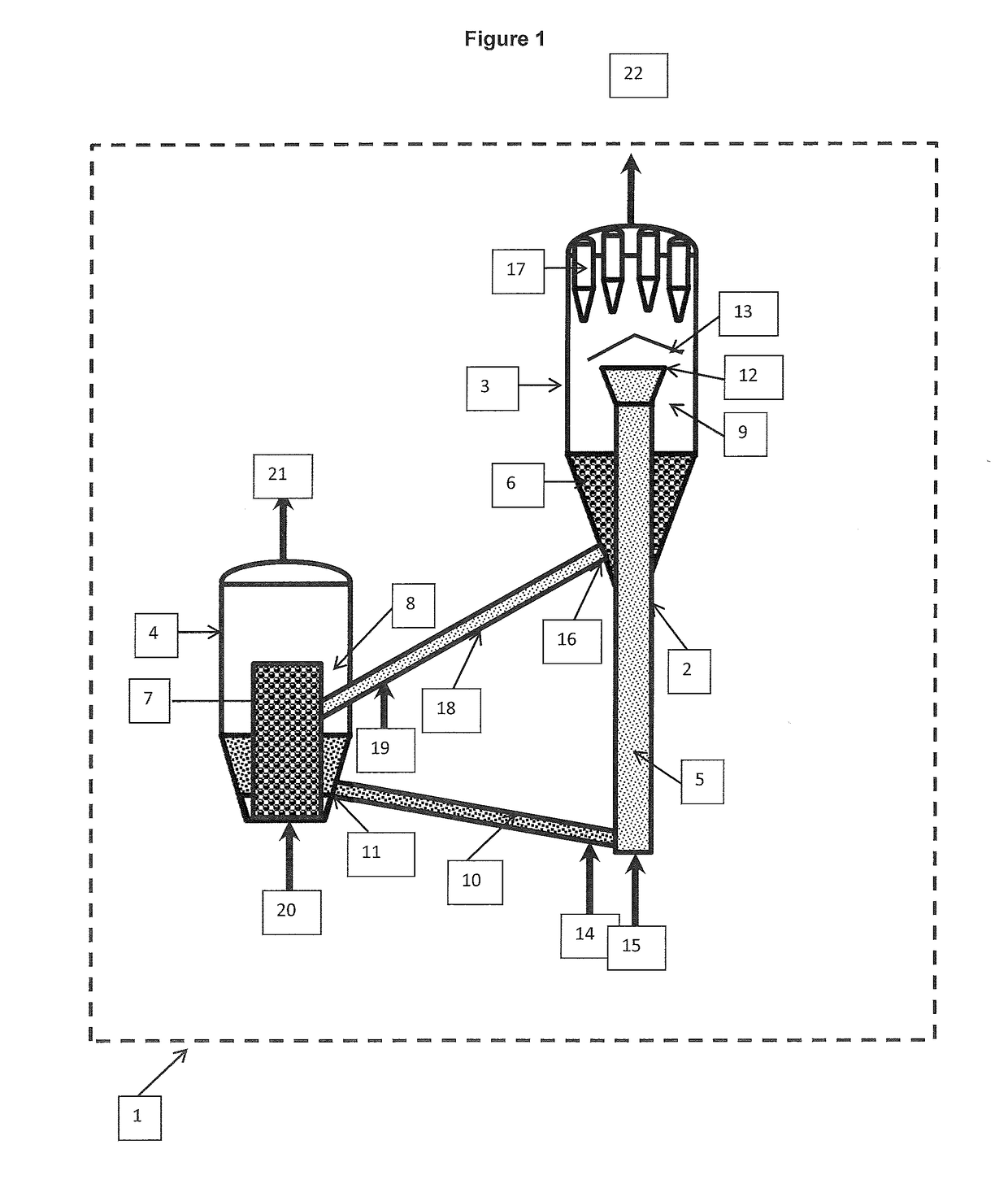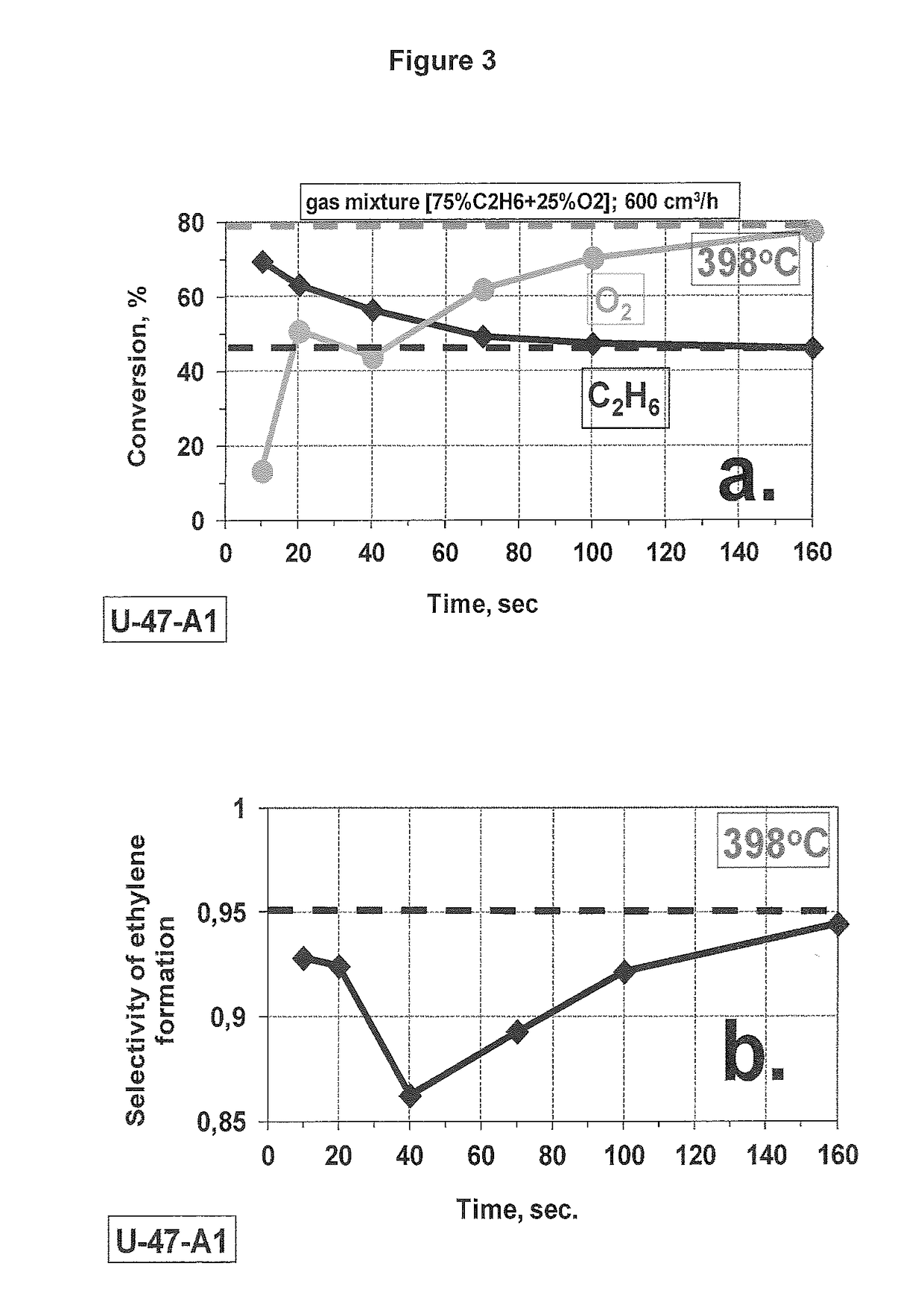High conversion and selectivity odh process
a technology of odh and process, which is applied in the direction of catalyst regeneration/reactivation, physical/chemical process catalysts, bulk chemical production, etc., can solve the problems of difficult to gain traction of odh technology, high cost of industrial scale facilities, and the potential for decomposition (decomp), so as to maintain the overall selectivity of the reactor above 90%, reduce the amount of alkane feed, and reduce the effect of oxidation
- Summary
- Abstract
- Description
- Claims
- Application Information
AI Technical Summary
Benefits of technology
Problems solved by technology
Method used
Image
Examples
experiment # 1
Experiment #1
[0150](AirGas Mixture [75% C2H6+25% O2]) 355° C.
[0151]FIGS. 2 and 3 demonstrate a time dependence of the ethane and O2 conversion as well as the selectivity of ethylene formation upon the gradual reduction of the pre-oxidized catalyst by the reaction mixture supplied at 600 cc / hrat two different temperatures.
[0152]As one can see (FIGS. 2, 3), all transient processes take place during the first operation minute in our testing conditions. The effect is not pronounced at ˜355° C., only a slight increase of the conversion without any selectivity loss can be noted (FIG. 2). The same effect of the conversion rise becomes much stronger at 400° C., but in this case it is accompanied by a substantial loss of the selectivity due to additional formation of CO2 (FIG. 3). It is necessary to mention that the more actively occurring process at 400° C. is accompanied by measurable self-heating of the catalyst layer (˜5-6° C. measured on the wall of the reactor). Some contribution of un...
experiment 2
[0153]Experiment 1 was repeated at 398° C.
[0154]Comparing experiment 1 and 2, the maximum conversion was increased to above 70%.
experiment 3
[0155]To clarify the invention, an additional test was carried out with varied gas flow rates (300 and 1200 cc / min) using same condition as example 1 and 2, except that the flow rate was 1200 cm3 / h. Results obtained are presented in FIGS. 4 and 5.
[0156]The data obtained (FIGS. 3-5), shows that the selectivity is related to the feed flow rate (space velocity). Reduction of the gas flow rate down to 600 h−1 causes a temporary drop of the selectivity down to 75% (FIG. 5b). Again, the process is accompanied by considerable self-heating of the catalytic layer after the gas switch to the reaction mixture (˜6-7° C. measured on the wall of the reactor). The selectivity curves are summarized and compared in FIG. 6. It is interesting to note at short residence time, despite the high conversion, very little gas phase oxygen is consumed. So, the contribution of undesirable complete oxidation with temporary heating of the catalyst bed becomes more and more pronounced upon the rise of the contact...
PUM
| Property | Measurement | Unit |
|---|---|---|
| Temperature | aaaaa | aaaaa |
| Temperature | aaaaa | aaaaa |
| Temperature | aaaaa | aaaaa |
Abstract
Description
Claims
Application Information
 Login to View More
Login to View More - R&D
- Intellectual Property
- Life Sciences
- Materials
- Tech Scout
- Unparalleled Data Quality
- Higher Quality Content
- 60% Fewer Hallucinations
Browse by: Latest US Patents, China's latest patents, Technical Efficacy Thesaurus, Application Domain, Technology Topic, Popular Technical Reports.
© 2025 PatSnap. All rights reserved.Legal|Privacy policy|Modern Slavery Act Transparency Statement|Sitemap|About US| Contact US: help@patsnap.com



